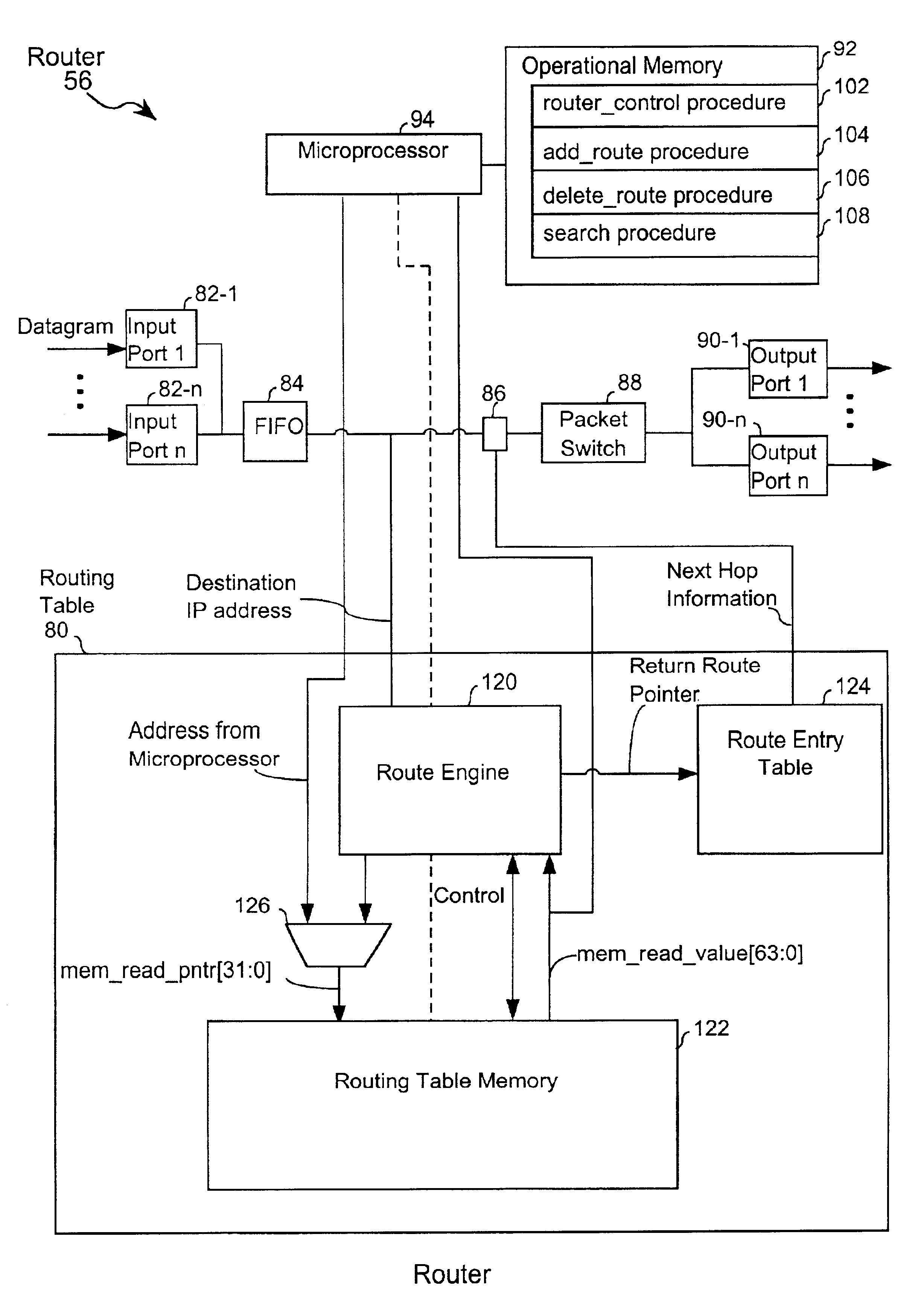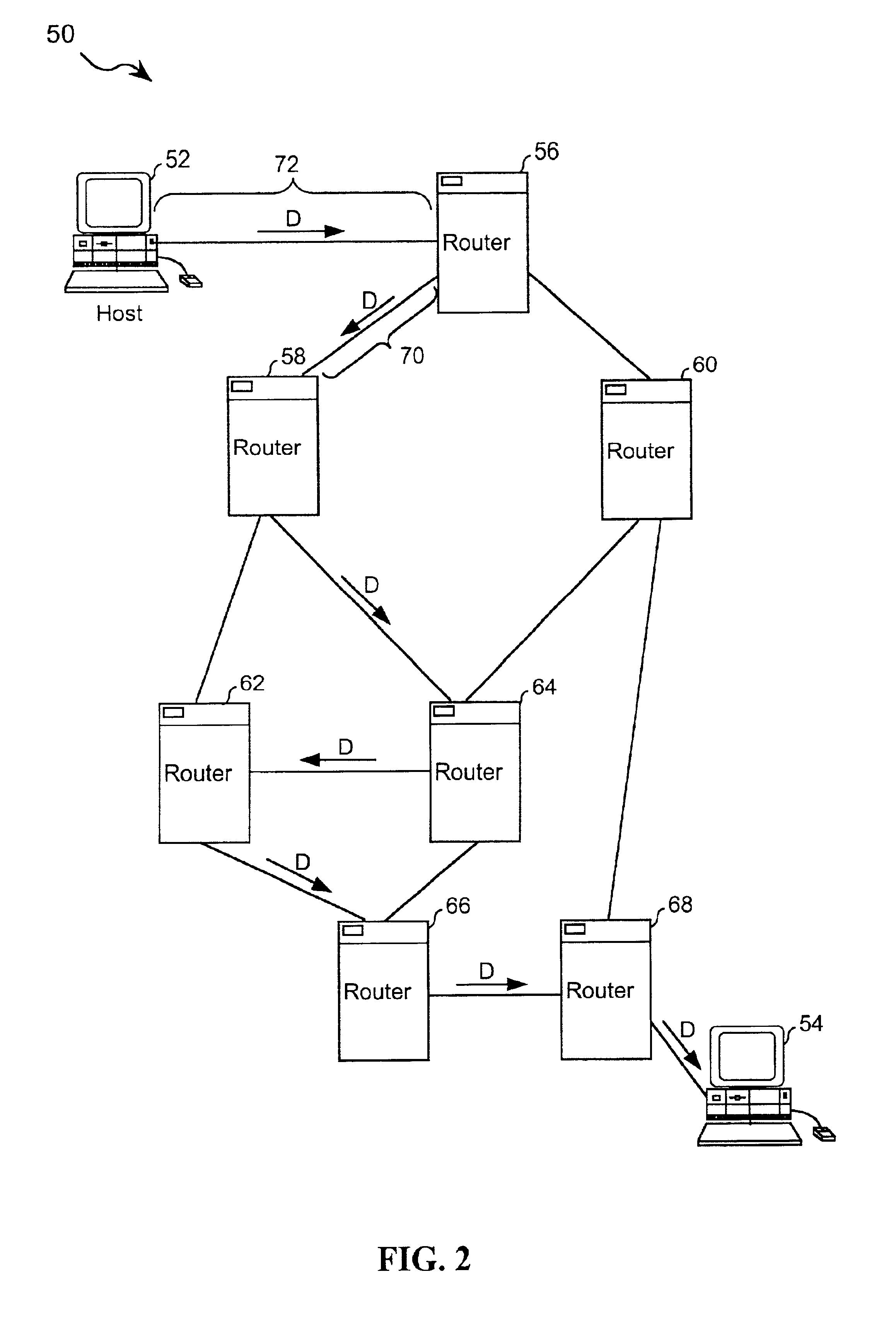Network routing table and packet routing method
- Summary
- Abstract
- Description
- Claims
- Application Information
AI Technical Summary
Benefits of technology
Problems solved by technology
Method used
Image
Examples
Embodiment Construction
[0061]In FIG. 2, in an exemplary packet network 50, a source host computer 52 sends Ace information to a destination host computer 54. The source host computer 52 places the information in one or more datagrams or packets P and sends that information to the destination host computer 54 via a network of routers 56-68. An exemplary hop 70 interconnects two routers. Another exemplary hop 72 interconnects a router 56 and a host 52. The arrows show the path of the datagram / packet P through the network of routers 56-68 to the destination host computer 54. The routers 56-68 use the routing table of the present invention.
[0062]In FIG. 3, the router 56 uses the routing table 80 of the present invention to search for a route corresponding to a destination address in a fixed, deterministic, amount of time. The router 56 includes:[0063]input ports 82 that receive packets;[0064]a first-in-first-out (FIFO) buffer 84 that stores the packets as the packets are received by the input ports 82 and tha...
PUM
 Login to View More
Login to View More Abstract
Description
Claims
Application Information
 Login to View More
Login to View More - R&D
- Intellectual Property
- Life Sciences
- Materials
- Tech Scout
- Unparalleled Data Quality
- Higher Quality Content
- 60% Fewer Hallucinations
Browse by: Latest US Patents, China's latest patents, Technical Efficacy Thesaurus, Application Domain, Technology Topic, Popular Technical Reports.
© 2025 PatSnap. All rights reserved.Legal|Privacy policy|Modern Slavery Act Transparency Statement|Sitemap|About US| Contact US: help@patsnap.com



